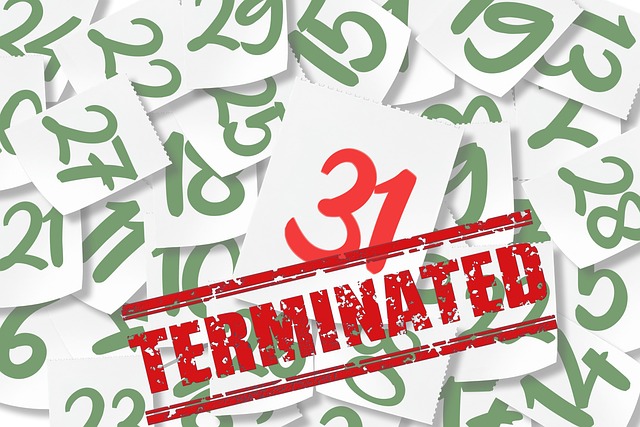Crafting clear, specific business agreements is vital for risk mitigation and fostering successful partnerships. Using precise language defines roles, expectations, and consequences, enhancing transparency and trust among parties. By identifying potential risks proactively, legal teams can draft tailored contracts with valid terms related to confidentiality, dispute resolution, intellectual property, and termination. Regularly reviewing and updating these agreements based on industry standards and legal developments is crucial for effective risk management, ensuring long-term business prosperity.
In the dynamic landscape of business, navigating business agreements with precise language is paramount to minimizing risks. This article guides entrepreneurs through the intricate process of crafting and understanding contract language, a foundational stone in risk mitigation. We explore strategies like identifying potential hazards proactively and implementing practical tips for clarity and specificity. By mastering these techniques, you can ensure that your business agreements foster success while safeguarding against unforeseen challenges.
- Understanding Contract Language: The Foundation of Risk Mitigation
- Crafting Clear and Specific Terms: A Key to Success in Business Agreements
- Identifying Potential Risks: A Proactive Approach
- Strategies for Minimizing Uncertainty: Practical Tips for Entrepreneurs
Understanding Contract Language: The Foundation of Risk Mitigation

Understanding contract language is the bedrock upon which businesses build their risk mitigation strategies. When drafting or reviewing business agreements, precise and clear wording is key to avoiding misunderstandings and potential disputes. Every clause, term, and condition should be carefully considered as they directly impact future obligations and liabilities.
By using specific, unambiguous language, businesses can define their rights and responsibilities, establish expectations, and minimize the chance of misinterpretation. This proactive approach ensures that everyone involved has a clear understanding of the deal, fostering transparency and trust which are essential for long-term success and positive business relationships.
Crafting Clear and Specific Terms: A Key to Success in Business Agreements

In the realm of business agreements, crafting clear and specific terms is akin to building a robust foundation for future partnerships. Each clause and sentence must be meticulously worded to ensure all parties involved understand their rights, responsibilities, and potential risks. Ambiguity often lies at the heart of disputes, so precise language becomes a powerful tool to minimize these chances. By clearly defining expectations, deadlines, and consequences, businesses can navigate complex scenarios with confidence.
Specificity in contract language allows for better risk management. When terms are precise, there’s less room for interpretation, reducing the likelihood of misunderstandings or malicious intent. This clarity fosters trust among parties, enabling them to focus on executing the agreement rather than constantly clarifying vague sections. Ultimately, it ensures a harmonious business relationship, where everyone is aligned and working towards shared goals.
Identifying Potential Risks: A Proactive Approach

Identifying potential risks is a proactive step in any business agreement, enabling parties to anticipate and mitigate issues before they escalate. This involves a thorough analysis of various factors unique to each contract, such as industry-specific regulations, market dynamics, and the specific goals of both businesses involved. By understanding these nuances, legal teams can craft contract language that accurately reflects the expectations and responsibilities of all parties.
This proactive approach ensures that business agreements are not just legally sound but also practical, minimizing the chances of disputes or misunderstandings later on. Well-defined terms related to confidentiality, dispute resolution processes, intellectual property rights, and termination clauses, among others, can significantly reduce risks for both businesses, fostering a collaborative and mutually beneficial partnership.
Strategies for Minimizing Uncertainty: Practical Tips for Entrepreneurs

Uncertainty in business agreements can lead to costly disputes and missed opportunities. To minimize risks, entrepreneurs should focus on clear and precise contract language. Start by defining terms explicitly; avoid vague or ambiguous wording that could be interpreted differently by each party. Include detailed descriptions of services, deliverables, timelines, and payment structures to set clear expectations.
Additionally, incorporate mechanisms for resolving disputes upfront. Mediation clauses and designated dispute resolution procedures can help navigate conflicts efficiently without escalating to litigation. Regularly reviewing and updating contracts to reflect changes in the business landscape is also essential. Stay informed about industry standards and legal developments relevant to your sector, ensuring your agreements remain robust and effective tools for risk management.
By meticulously crafting business agreements with precise contract language, entrepreneurs can effectively minimize risks and foster successful partnerships. Understanding the foundational elements of contract language, defining terms clearly, proactively identifying potential pitfalls, and employing strategies to reduce uncertainty are essential steps in this process. Embracing these practices ensures that business relationships are built on a solid foundation of mutual understanding and risk mitigation.
